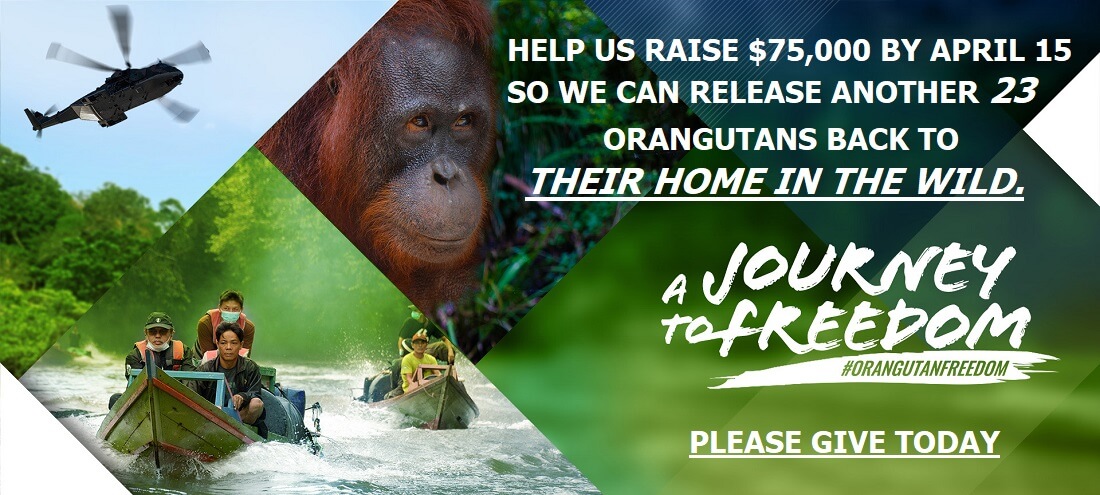New role for drones – wildlife, eco conservation
Sydney Morning Herald: Denis D Gray: August 19, 2012

Orangutans are some of the likely beneficiaries of the use of surveillance drones. Photo: Alamy
They’re better known as stealthy killing machines to take out suspected terrorists with pinpoint accuracy. But drones are also being put to more benign use in skies across several continents to track endangered wildlife, spot poachers and chart forest loss.
Although it’s still the “dawn of drone ecology,” as one innovator calls it, these unmanned aerial vehicles are already skimming over Indonesia’s jungle canopy to photograph orangutans, protecting rhinos in Nepal and studying invasive aquatic plants in Florida.
Activists launched a long-range drone in December to locate and photograph a Japanese whaling ship as the Sea Shepherd Conservation Society attempted to block Japan’s annual whale hunt in Antarctic waters.

In this March 1, 2012 photo released by ConservationDrones.org, a drone developed by the Swiss Federal Institute of Technology and partner Serge Wich in shown in Zurich, Switzerland. Photo: Lian Pin Koh
Relatively cheap, portable and earth-hugging, they fill a gap between satellite and manned aircraft imagery and on-the-ground observations, says Percival Franklin at the University of Florida, which has been developing such drones for more than a decade.
“The potential uses are almost unlimited,” says Ian Singleton, director of the Sumatran Orangutan Conservation Program, testing drones this year over Indonesia’s Tripa peat forest where fires set by palm oil growers are threatening the world’s highest density habitat of the great apes.
Conservation is one of the latest roles for these multi-taskers, either autonomously controlled by on-board computers or under remote guidance of a navigator. Ranging in size from less than half a kilogram (pound) to more than 18 metric tons (20 tons), drones have been used for firefighting, road patrols, hurricane tracking and other jobs too dull, dirty or dangerous for piloted craft.
Most prominently, they have been harnessed by the US military in recent years, often to detect and kill opponents in America’s “war on terror” in Afghanistan, Pakistan and elsewhere.
A conservation drone pioneer, Lian Pin Koh of the Swiss Federal Institute of Technology, says the idea came to him after another sweaty, jungle slog in Sabah, Malaysia, hauling heavy equipment for his field work.
“I told my assistant, who happened to be my wife, `How wonderful it would be if we could fly over that area rather than walk there again tomorrow,'” recalled the Singaporean expert on tropical deforestation, and a model plane hobbyist.
Unlike eco-drones in the United States, mostly custom-built or commercial models, Koh last year cobbled together a far cheaper, off-the-shelf version that poorer organizations and governments in the developing world can better afford.
He and partner Serge Wich bought a model plane _ some are available in China for as little as $100 _ added an autopilot system, open source software to program missions, and still and video cameras. All for less than $2,000, or ten times cheaper than some commercial vehicles with similar capabilities.
This year, they have flown more than 200 mostly test runs in Asia using an improved version with a 2-meter (6.5 foot) wing span, air time of 45 minutes and a 25-kilometer (15.5-mile) range.
The drones were flown over rough terrain in Malaysia where GPS-collared elephants are difficult to monitor from the ground. In Nepal’s Chitwan National Park, the World Wide Fund for Nature (WWF) and the Nepal Army conducted trials on detecting rhino and elephant poachers. The duo also assisted the Ugalla Primate Project to head count chimpanzees in western Tanzania.
Counting orangutan nests is the main way of surveying orangutan populations,” says Graham Usher of the Sumatran project, which captured one of the apes atop a palm tree feeding on palm heart in a sharp photograph. From higher altitudes the drones, he said, also provide high-resolution, real-time images showing where forests are being cleared and set ablaze.
By contrast ground expeditions are time-consuming, logistically cumbersome and expensive. A conventional orangutan census in Sumatra, which may also involve helicopters and aircraft, costs some $250,000. Surveying land use by satellite is likewise costly and hampered by frequent cloud cover over tropical areas.
But there are drawbacks with drones, including landing them in often thickly vegetated areas since they need clear touch-down zones of about 100 by 100 meters (yards). Koh said he was working to rig the vehicle with a parachute to allow landing in confined space.
Franklin says the hardware and image interpretation are still being developed as more missions are planned in the United States, ranging from counting pygmy rabbit burrows in Idaho to monitoring salmon-eating seabirds off the Oregon coast.
The University of Florida is testing another “war on terror” weapon, thermal imaging, to hunt for Burmese pythons invading the state’s Everglades, having found the snakes regulate temperatures of their nests in a way that makes them visible through such technology.
Other eyes-in-the-sky increasingly used for conservation tasks are ultralights, birdlike craft with a major advantage over drones _ the human touch.
“It’s the closest thing we have come to flying like birds 30,000 years after coming out of caves,” says Mark Silverberg, preparing to take a reporter up in a para-motor ultralight, one earlier hired by conservation groups to photograph and video Mekong River dolphins, tiger habitat in Myanmar and denuded hills in northern Thailand.
Taking off from a fallow rice field in Pranburi district, south of the Thai capital Bangkok, we nearly brush branches as our two-seater ultralight craft needles through stands of trees, follows a flock of water fowl just below us, then soars to 300 meters (980 feet) for an all-horizons view. Where humanity intersects with nature is clearly evident, and beyond loom limestone cliffs of a national park invaded by polluting shrimp farms.
“I can really craft a shoot, a sequence, show scenes better than drones because there is a human being who can take in and react to the whole environment more immediately and make adjustments,” says Silverberg, an American who runs Paramotor Thailand.
The ultralight, he explains, has other advantages over most eco-drones: it can remain airborne for up to three hours, cover 70 kilometers and carry heavier payloads. But ultralights are rather noisy and pilots are reluctant to fly over water or thick vegetation in event of an emergency landing.
“All in all, there’s really no competition with drones,” says Silverberg after the flight over south of Bangkok. “Both are really great tools for conservation.”





